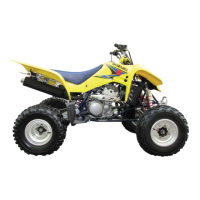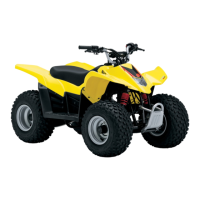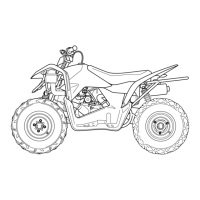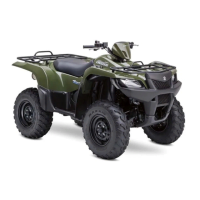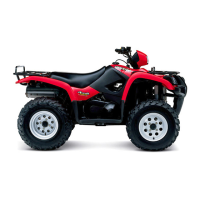7-2
ELEC
TR
ICA
L
SYS
TE
M
CAUTIONS IN SERVICING
CONNECTORS
• When disconnecting a connector, be sure to hold the termi-
nals;
do
not pull the lead wires.
• When connecting a connector, push it
in
so it
is
firmly
attached.
• Inspect the connector for corrosion, contamination and any
breakage
in the cover.
COUPLERS
• With a lock-type coupler, be sure to release the lock before
disconnecting
it.
When connecting a coupler, push
it
in
until
the lock clicks shut.
•
When
disconnecting a
coupler
, be sure to hold the
coupler
;
do
not pull the lead wires.
• Inspect each terminal on the coupler for looseness or bends.
• Inspect each terminal for corrosion and contamination.
CLAMPS
• Refer to the
'WI
RE HARNESS ROUTING" section for proper
clamping procedures. (c:::7B-l1 to 8-12)
• Bend the clamp properly, as shown in the illustration.
• When clamping the wire harness, do not allow it to hang
down.
• Do not use wire or any substitutes for the band·type clamp.
FUSES
• When a fuse blows, always investigate the cause, correct the
problem, and then replace the fuse.
• Do not use a fuse
of
a different capacity.
• Do not use any substitutes for the fuse
(e
.
g.
, wire).
SEMI-CONDUCTOR EQUIPPED PARTS
• Do not drop any part that contains a semi·conductor (e.g
.,
COl unit, regulator/rectifier).
• When inspecting the part, follow the inspection instructions
carefully. Neglecting proper procedures may cause this part
to be damaged.
CORRECT INCORRECT
Q
~
-I
7f-
-
INCORRECT
~
\

